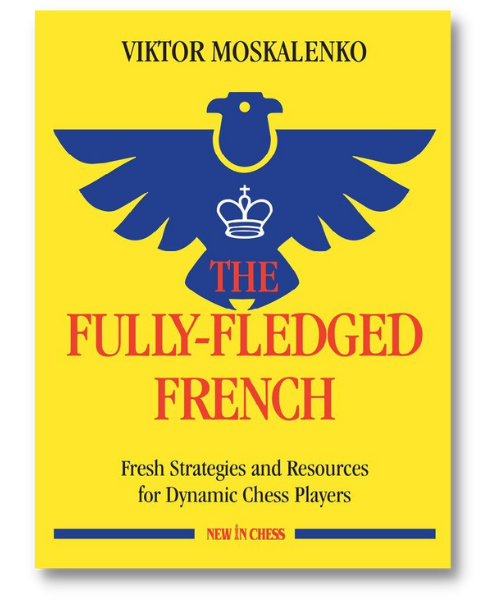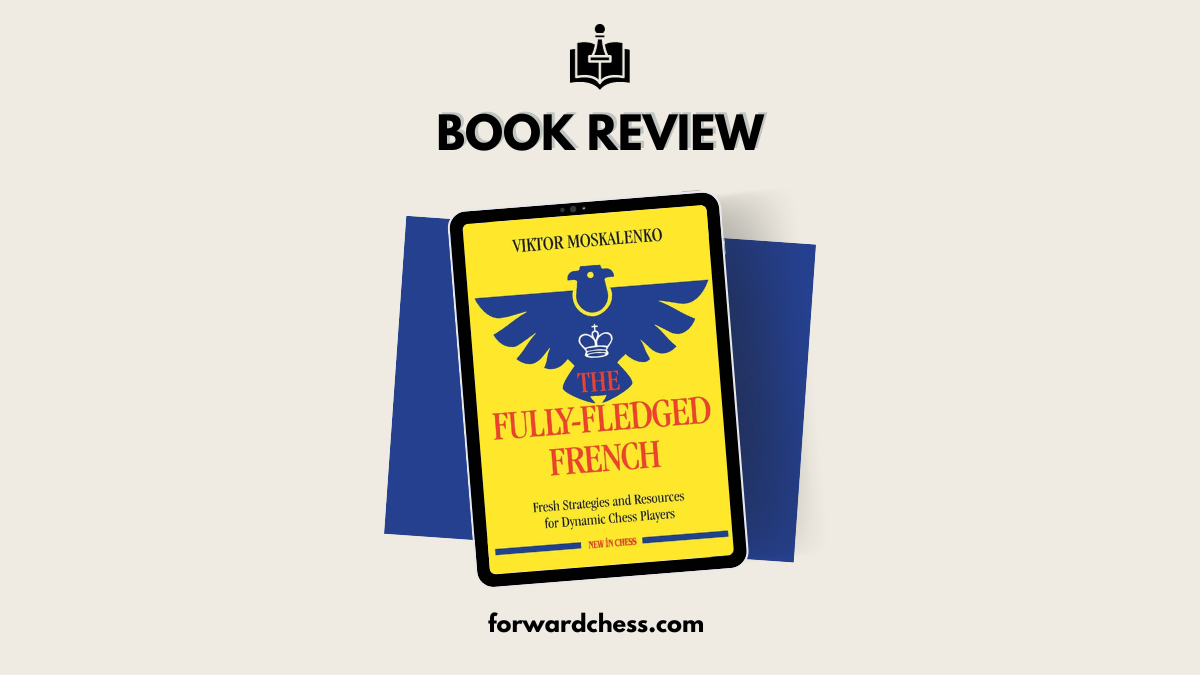Book Review of The Fully-Fledged French
“I have never in my life played the French Defense, which is the dullest of all openings.”
– Wilhelm Steinitz.
While former World Champion Steinitz obviously had a very poor opinion of the French Defense, one of his successors, Mikhail Botvinnik, played it successfully for much of his career. Many other elite players have also championed the Defense, and it continues to be played at the top level.
The author of this book, GM Viktor Moskalenko, writes:
“With 1…e7-e6, Black builds a fortress with a closed center, so the main roads to success are those leading to a game where White’s extra tempo is not so important. This defense is also full of strategic as well as tactical resources, and according to many masters, its lines are among the most complicated in chess. There are also several forgotten systems that are still full of possibilities, sharp and exotic lines, original ideas, and much more.”
Moskalenko’s view is more in line with the current reputation of the French. Of course, it is possible for White to counter the French in an insipid way with the Exchange Variation, but even in this variation, Black can avoid playing for a draw by unbalancing the position. Moreover, the French is not the only opening where White can play for a draw, and so this problem is not unique to the French.
This is the author’s fourth book on the French, and it can be considered an updated edition of his book The Even More Flexible French. The format of the current book follows that of the previous book. Regarding the relation of the current book to his previous ones, the author writes:
“This new book, The Fully Fledged French, continues to mix various aspects as did my earlier works The Flexible French and The Even More Flexible French: my broad experience in this opening (this book also contains many of my own games), my vision of its concepts and analysis of creative new ideas that keep coming up. The purpose of these books has always been to offer a combative repertoire to black players. This is the case, especially in this new book, in which I have concentrated more on Black and removed a number of less relevant lines.”

The book covers all the main tries for White, and the author has chosen the more complex variations for Black. These include 3…Nf6 and 3…Be7 against the Tarrasch (3.Nd2) and the Winawer (3…Bb4) against 3.Nc3. Moskalenko also offers some good options to break the symmetry in the Exchange Variation, and sound options against White’s less-common systems, such as the King’s Indian Attack.
Throughout the book, the author provides the main ideas, plans, traps, weapons and relevant statistics for the variations considered. Each chapter includes a summary to remind the reader of the main ideas. The theoretical details are complemented by 72 well-annotated games, including 18 games by the author. There are 56 more annotated games in the book compared to the previous book, a substantial increase. These games enable the reader to get a clear picture of the various plans and ideas once the opening phase is over. It’s also very pleasing when the author plays the opening himself and can provide extra insight into the opening.
In conclusion, Moskalenko has written an entertaining and useful book on the French Defense. He has provided many interesting ideas for Black in the main variations and shown how Black can use the opening as a fighting defense against 1.e4.
Have any thoughts or questions? Let us know in the comments!
- New Release: Chess Analysis – Reloaded - March 9, 2024
- Review: The Art of The Endgame – Revised Edition - February 14, 2024
- Review: Study Chess with Matthew Sadler - December 13, 2023
